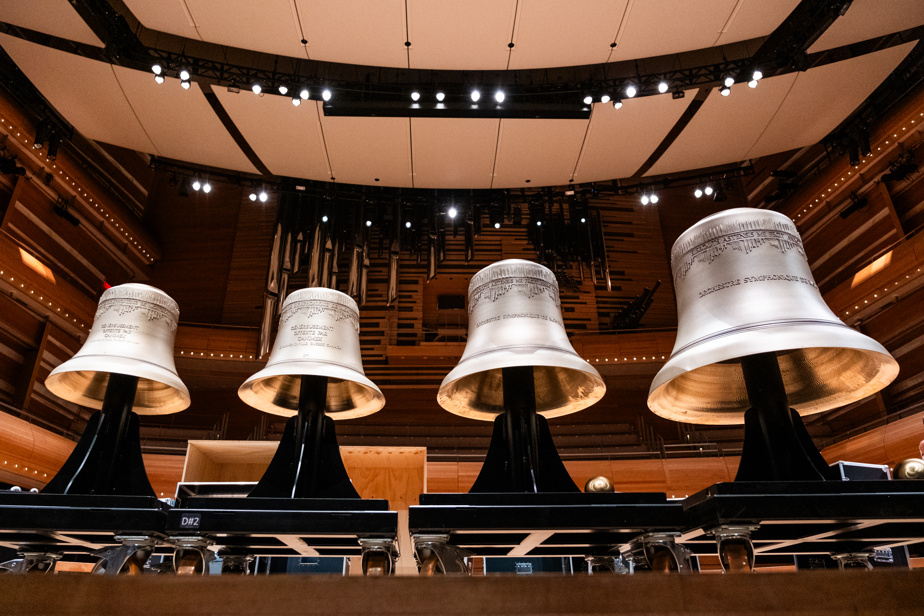Carillon bells make their debut at the Montreal Symphony Orchestra (MSO). The Press was able to witness the arrival of the first four bells of this instrument, which crossed the Atlantic to allow the OSM to reach new heights. Let’s discover their history.
The carillon and its bells

PHOTO CHARLES WILLIAM PELLETIER, SPECIAL COLLABORATION
The new OSM bells are decorated with an ornament specific to the Maison symphonique: the organ pipe motif.
Like church bells, the carillon bells are made of bronze. Each one is a different size, depending on the note it is tuned to, and has its own mallet. “The weight of the mallet must be ideal to make the bell resonate according to its own weight,” explains artistic operations director Sébastien Almon.
The OSM ordered 10 bells from the Royal Eijsbouts foundry in the Netherlands, an expert in the manufacture of church and orchestra bells. The first four made their way to Montreal by boat in June and the other six will arrive in November. Everything was custom-made: preparation of the molds, tuning of the bells and casting of the text.
A long cherished project

PHOTO CHARLES WILLIAM PELLETIER, SPECIAL COLLABORATION
Thanks to a donation from Roger Dubois, president of the Canimex company and loyal patron of the OSM, the orchestra was able to obtain the 10 bells. During the unveiling of the first four bells, the philanthropist had the honor of ringing the first bell.
“I feel like it’s Christmas,” said music director Rafael Payare at the unveiling of the bells last July.
“It’s been a dream for several decades,” adds Sébastien Almon, who led the project. The latter was guided by the desire to “play the repertoire with instruments from the time when the repertoire was composed.”
Serge Desgagné, OSM solo percussionist since 1997, conducted the research to find the right instrument. It was necessary to “develop a bell that sounds very well, but has the least possible weight so that the bell is more transportable and practical.”
How do you play the carillon?
The carillon bells are a new feature not only for the OSM, but also for percussionist Serge Desgagné. It is “a discovery in terms of playing,” he says.
Each bell is accompanied by a steel mallet and a bronze one. “The touch of the steel mallet is harder, more direct, so it will give a slightly more strident effect. The bronze hammer will give a more enveloped sound,” he explains.
It is up to the performer to find the ideal interpretation for the needs of the orchestra. “My motivation for each instrument, whether it is the triangle or these wonderful carillon bells, is always to develop the touch to give a sensation, an impression, so that the audience feels something.”
A new sound for the OSM

PHOTO CHARLES WILLIAM PELLETIER, SPECIAL COLLABORATION
A single small stroke of a carillon bell resonates throughout the Maison symphonique, notes Rafael Payare.
The low C and middle G bells were ordered for the Fantastic Symphony by Berlioz, which will be performed at the Maison symphonique on Wednesday and Thursday. The bells will then go on a European tour with the OSM in November.
This new instrument has a louder and more haunting sound than the tubular chime, which was used previously. “They play the same note, but the sound is completely different,” says Rafael Payare.
According to Sébastien Almon, it is the artistic image of the orchestra that benefits from the introduction of this carillon, bringing it closer to other large orchestras that have these bells, such as those in Paris, Berlin or Amsterdam.
For Rafael Payare, the quality of the instrument reflects the level of the orchestra. “We now have our Stradivarius of bells.”
